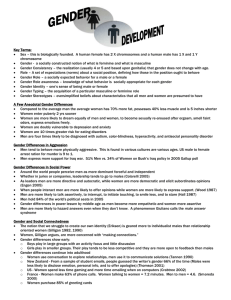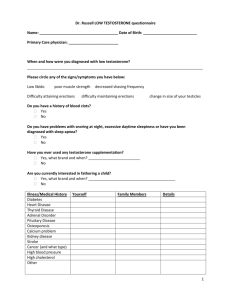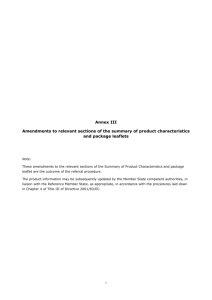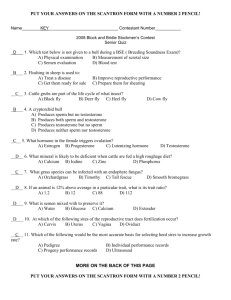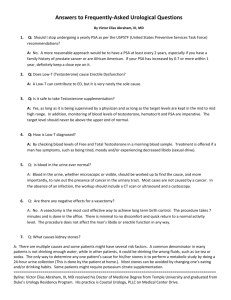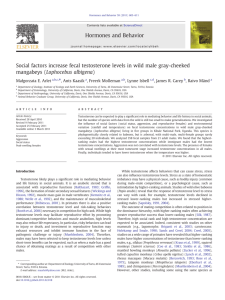Electronic supplementary material for Apfelbeck and Goymann
advertisement
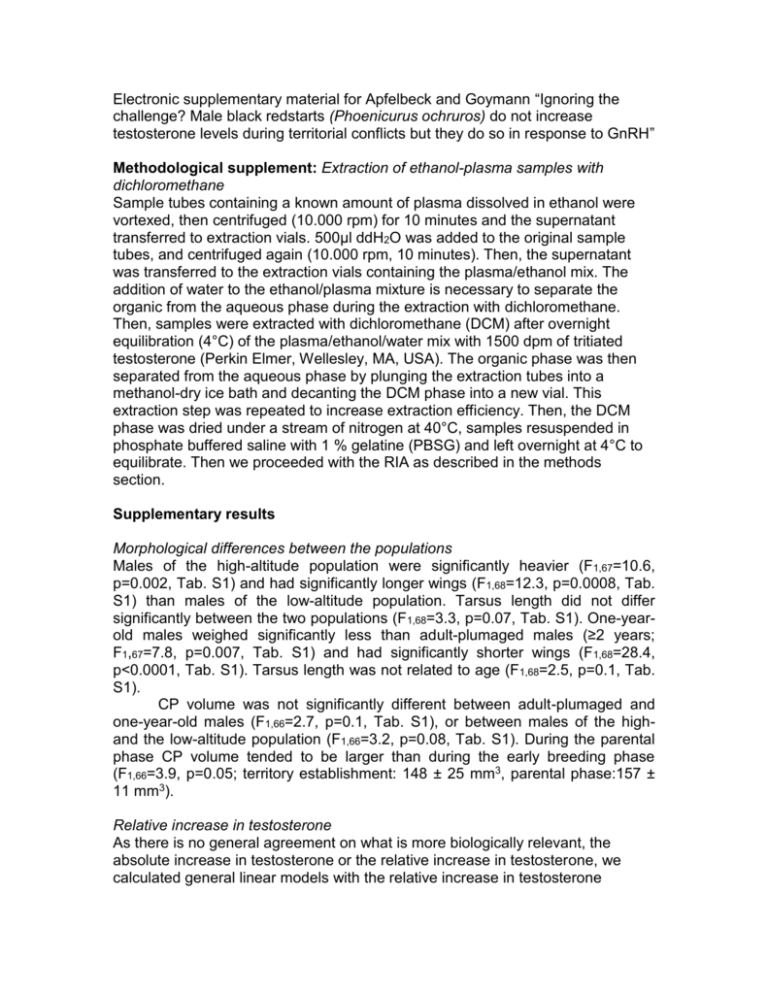
Electronic supplementary material for Apfelbeck and Goymann “Ignoring the challenge? Male black redstarts (Phoenicurus ochruros) do not increase testosterone levels during territorial conflicts but they do so in response to GnRH” Methodological supplement: Extraction of ethanol-plasma samples with dichloromethane Sample tubes containing a known amount of plasma dissolved in ethanol were vortexed, then centrifuged (10.000 rpm) for 10 minutes and the supernatant transferred to extraction vials. 500µl ddH2O was added to the original sample tubes, and centrifuged again (10.000 rpm, 10 minutes). Then, the supernatant was transferred to the extraction vials containing the plasma/ethanol mix. The addition of water to the ethanol/plasma mixture is necessary to separate the organic from the aqueous phase during the extraction with dichloromethane. Then, samples were extracted with dichloromethane (DCM) after overnight equilibration (4°C) of the plasma/ethanol/water mix with 1500 dpm of tritiated testosterone (Perkin Elmer, Wellesley, MA, USA). The organic phase was then separated from the aqueous phase by plunging the extraction tubes into a methanol-dry ice bath and decanting the DCM phase into a new vial. This extraction step was repeated to increase extraction efficiency. Then, the DCM phase was dried under a stream of nitrogen at 40°C, samples resuspended in phosphate buffered saline with 1 % gelatine (PBSG) and left overnight at 4°C to equilibrate. Then we proceeded with the RIA as described in the methods section. Supplementary results Morphological differences between the populations Males of the high-altitude population were significantly heavier (F1,67=10.6, p=0.002, Tab. S1) and had significantly longer wings (F1,68=12.3, p=0.0008, Tab. S1) than males of the low-altitude population. Tarsus length did not differ significantly between the two populations (F1,68=3.3, p=0.07, Tab. S1). One-yearold males weighed significantly less than adult-plumaged males (≥2 years; F1,67=7.8, p=0.007, Tab. S1) and had significantly shorter wings (F1,68=28.4, p<0.0001, Tab. S1). Tarsus length was not related to age (F1,68=2.5, p=0.1, Tab. S1). CP volume was not significantly different between adult-plumaged and one-year-old males (F1,66=2.7, p=0.1, Tab. S1), or between males of the highand the low-altitude population (F1,66=3.2, p=0.08, Tab. S1). During the parental phase CP volume tended to be larger than during the early breeding phase (F1,66=3.9, p=0.05; territory establishment: 148 ± 25 mm3, parental phase:157 ± 11 mm3). Relative increase in testosterone As there is no general agreement on what is more biologically relevant, the absolute increase in testosterone or the relative increase in testosterone, we calculated general linear models with the relative increase in testosterone (GnRH-induced / post-capture testosterone levels) as dependent variable (Tab. S2) in addition to the absolute increase in testosterone (see manuscript). Table S1. Morphological measurements in relation to altitude and age (means ± 95% CI). low-altitude high-altitude yearlings adults N=52 N=30 N=37 N=45 body mass (g) 16.4g ± 0.2 17.0 ± 0.3 16.3 ± 0.3 16.9 ± 0.3 tarsus length (mm) 23.2 ± 0.2 23.4 ± 0.3 23.2 ± 0.2 23.4 ± 0.2 wing length (mm) 87 ± 1 88 ± 1 86 ± 1 88 ± 1 CP volume (mm3) 144 ± 16 166 ± 20 142 ± 18 163 ± 18 Table S2. Relative increase in testosterone (GnRH-induced testosterone/postcapture testosterone) in relation to the experimental factors and the behavioural variables. Significant results are highlighted in bold. Test statistic p-value Both populations treatment F1,66=0.6 0.4 breeding stage F1,66=1.3 0.3 Location F1,66=0.8 0.4 Age F1,66=1.2 0.3 Low altitude population treatment F1,49=0.2 0.7 Stage F2,49=6.2 0.004 early-parental t=-1.2 (df=49) 0.2 early-autumn t=-2.6 (df=49) 0.01 Behaviour approach time within 5m agitation attacks (yes, no) song (yes, no) STI duration attacks (yes, no) STI duration*attacks F1,24=2.5 F1,24=3.2 F1,24=0.01 F1,24=0.2 F1,24=0.8 F1,26=4.4 F1,26=1.9 F1,26=8.1 0.1 0.09 0.9 0.6 0.4 0.05 0.2 0.009
